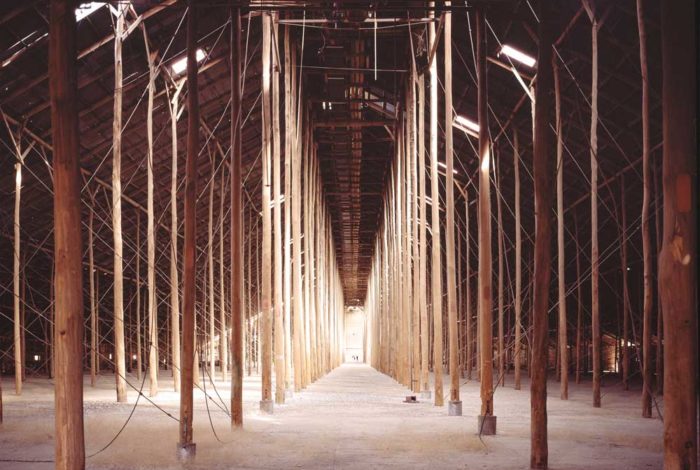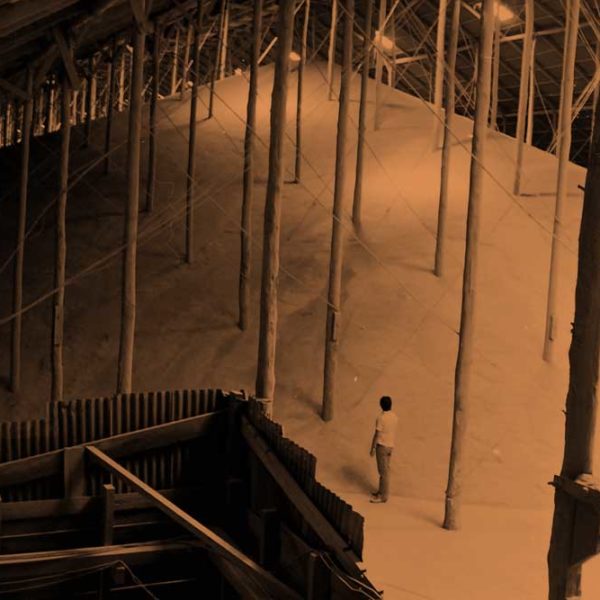- Bruce Thomas Heritage Victoria & Heritage Council of Victoria

1. Murtoa and The Stick Shed
Grain is central to the story of Murtoa and The Stick Shed signifies a part of this story. A story that depicts both the impact of World War II on Australia’s trade and export industry and the transformation of grain haulage in Australia.
Murtoa is a proud wheatbelt town that was settled in 1872 with Lake Marma as the centre piece and the railways central to trade and employment.
The Stick Shed is a grain storage facility known as Murtoa No. 1 Grain Store. It was built over four months between September 1941 and January 1942 and filled with grain within six months of construction. It was the first emergency bulk wheat storage shed built in Victoria and is the only remaining shed of this type in Australia.
The Stick Shed covers 16,000m2 under roof and measures 265 metres long, 60 metres wide and almost 20 metres high at its apex. The size and scale of The Stick Shed reflects the massive growth of the wheat industry and the need for mass distribution, bulk grain handling and storage facilities for Australia’s oldest agricultural crop.
Murtoa was selected as the site for The Stick Shed as it was located within a major wheat cropping area, and adjacent to the main railway line between Melbourne and Adelaide. It was also at the confluence of an additional branch line connecting the Northern wheat areas of the Mallee via Hopetoun.
The working section of the present day GrainCorp Murtoa Grain Receival Centre can hold up to 400,000 tonnes of grain and is the largest inland receival centre in Australia.

